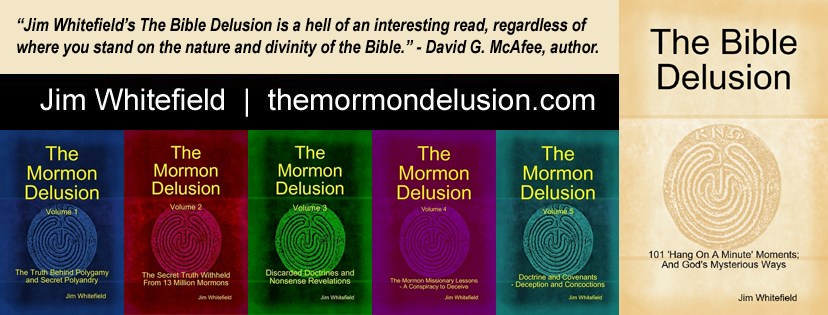Much of Joseph Smith’s theology which the Mormon Church now holds as true was concocted long after Smith’s first attempt at writing so-called scripture – The Book of Mormon. Thus many concepts found within the pages of the Book of Mormon completely contradict modern Mormon teachings. The book remains monotheistic throughout with God as a spirit and no body. Jesus is God manifest in the flesh. Traditional teachings that Smith and his followers accepted (and Smith incorporated into his Book of Mormon), before he started dreaming up new concepts. Thus his ‘Nephites’ held traditional views (some of which did not even get invented until long after they had purportedly left the Holy Land). Several Book of Mormon verses were altered after the first publication, completely changing the context in order to better fit Smith’s later theology (see examples in ‘The First Vision’ article on the sidebar), but although there have been thousands of subsequent alterations and falsifications, the book still contains several remarkable contradictions to modern Mormon doctrine which members just don’t ‘see’. This is just one example.
Smith’s ‘American’ Nephites and Lamanites, believed in ‘heaven’ and ‘hell’ in the traditional Christian sense) for over a thousand years, which in itself is surprising considering they were supposedly Jews – who do not believe in either, in the Christian sense. Jesus supposedly visited the Nephites but he didn’t bother to tell them they were wrong about heaven and hell or explain anything about the kingdoms which Smith later invented. Jesus left them in complete ignorance of the Mormon claimed facts which Smith invented after the Book of Mormon was published. Would deity really do that? Hardly. As always, there is only one suspect, or rather culprit, regarding the facts which Smith claimed God dictated word by word into his hat.
Heaven and Hell (TMD Vol. 3:29).
“Mormons believe in three degrees of ‘glory’ rather than one heaven. The highest degree is Celestial, within which there are a further three degrees of glory, the highest of which is ‘Exaltation’ where men become Gods and have many wives. Nothing is said about the other two ‘degrees’ in the Celestial kingdom. The second kingdom is Terrestrial and the lowest is Telestial. A ‘hell’ also exists in Mormon theology but is generally referred to as ‘Outer Darkness’ and is reserved for those who wilfully and knowingly turn their backs on God and the Saviour having first known beyond doubt that they exist. It is termed ‘denying the Holy Ghost’ and only a handful of people will go there. The Telestial kingdom is the place reserved for those who most other churches may consider as deserving of hell, but in Mormon theology it is actually a place that is better than Earth.
These concepts were invented after Smith wrote the Book of Mormon which notably only refers to the traditional Christian ideas and concepts of ‘heaven’ and ‘hell’ within its pages, with literally dozens and dozens of references. There isn’t a single reference in the Book of Mormon to Smith’s later concepts of Celestial, Terrestrial or Telestial kingdoms. This is a further evidence of Smith’s evolving theology. The Bible has just one reference to ‘celestial’ (heavenly) and ‘terrestrial’ (earthly) bodies (1 Cor 15:40-41) which includes the idea that there is a difference in the ‘glory’ of the sun, moon and different stars, from which Smith probably derived the basis of his ideas on different kingdoms to which people may go. The word ‘Telestial’ that Smith uses, only appears in the D&C, in two 1832 revelations, two years after the publication of the Book of Mormon, and nowhere else at all. ‘Telestial’ is not actually a word as such at all; Smith just made it up.”

